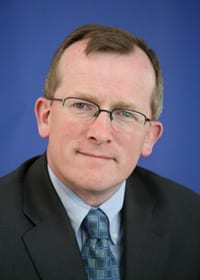We were conscious from the beginning that social media is first and foremost a personal space and, in interacting as a brand, the onus was on us to respect this and the community we were interacting with. We made a conscious decision to humanise the tone and make it more informal, while still reflecting the market and audience we were communicating with. Some cultures and languages have more formal interaction than others – we needed to be mindful of that.
We maintain corporate and consumer Twitter accounts, as you outline. Our Facebook activity is significant, with approximately 730,000 fans across 18 presences. Most of these are market-specific, with a couple for specific topics, namely Titanic Stories and IrelandTown – our Facebook social game. We also have about 115,000 followers on three Chinese social media platforms. Our approach has been to make services available from the centre but to allow market teams to scale and co-ordinate activities with their own tone, themes and objectives. Centrally, we provide content and app development, customer engagement, analytics, project co-ordination and social media learning and education. Our market teams provide market-specific content, campaign development and any local media buying.
Cross-over between channels works in specific instances. For example, our award-winning ‘Nick and Sam’s Roadtrip’ campaign in Britain integrated Twitter, Facebook and our main website DiscoverIreland.com. We maintain blogs in four languages and we find they work really well with Facebook. We are experimenting quite a bit to discover what works and to then share those successes across markets.
By necessity, it’s a combination of both. A new social media measurement tool, called ‘social equivalent advertising evaluate (SEAV)’, allows us to value our social activities. This places importance on organic growth and spread of our content. We also reference Facebook from our website and on many of our 58 million emails to consumers. Nevertheless, Facebook advertising has been an important element of our growth. For example, with our IrelandTown social game, launched in March 2011, we invested in advertising and got a 33% viral uplift over the campaign, using the built-in viral mechanics. We also monitor viral spread of our posts, because in particular this year, that spread contributes to SEAV.
We have had some viral successes; for example our St Patrick’s Day flashmob in Sydney, has had 2.3 million views on YouTube without any supporting media spend. However, we don’t always achieve that level of success; we look for viral or ‘word of mouth’ uplift in everything we do, knowing that in most cases it will only achieve a small percentage of organic lift. We analyse the success of our various videos on YouTube etc, to help us engineer more success in the future!
In the travel industry we have seen a shift in the balance of power over the last eight to ten years from the providers of services to the consumers of those services. From the ubiquity and importance of hotel reviews to story-telling by video on YouTube, the power of the consumer is widely evident. As a result, the ‘official’ view from tourist boards and service providers is often less prominent or sought after. In large part, this is due to consumers needing a real-time reportage on the experiences they are buying blind. Our use of social media in this area is to tap into the need for these authentic views. Fortunately, consumer experiences of the island of Ireland are largely positive, so the authenticity is there and our job is to help amplify that by getting the experiences to our audience. As you suggest, the ‘Roadtrip’ and YouTube competition are an effort to do this.
Firstly, we promote the best of Ireland through our social media platforms and we interact in a respectful, trustworthy and friendly way; secondly, we provide a platform for our visitors to share their island of Ireland experiences with each other.
How does Tourism Ireland measure the results of your brand-building activities? Do you use brand sentiment surveys or other measurements, such as the amount of searches ‘Discover Ireland’ gets via web search engines?
We conduct brand tracker surveys in our main markets each year and track Ireland’s standing compared to our competitors.
We look at search to get an understanding of performance in specific instances. We also did an interesting piece of work recently to establish the experiences that best represent the island of Ireland to our overseas audiences. We took the by-product of a US social media campaign where consumers listed their favourite things about Ireland and graphed them against their performance in search. This will help us plan our content.
A bit of both. However, as the organisation charged with marketing the island overseas, we have a duty to our stakeholders to carry out world-class marketing programmes – that means utilising all channels and opportunities to grow tourism to the island. Social media opens up another channel for Tourism Ireland and our industry partners to engage with potential visitors across the world.
Firstly, social media seems here to stay, so it is important to engage. The nature of the engagement will differ from organisation to organisation. It is important to think through your approach to tone and content, as you would with any other marketing communication. Social media is a conversation, not a one-way broadcast. Plan for interaction and set aside time and, if necessary, resource to help with that. On balance, it is a very positive experience that can benefit your organisation in many ways.
Related: Tweak Your Biz: When An Irish Business Community Goes Global!
Did you like this article?

- Please share it with your network, we’d really appreciate it!
- Would you like to write for Tweak Your Biz? Or sign up for our RSS?
- An outstanding title can increase tweets, Facebook Likes, and visitor traffic by 50% or more. Generate great titles for your articles and blog posts with the Tweak Your Biz Title Generator.
Connect with Tweak Your Biz on: 


Images: ”IRELAND road sign/Shutterstock.com“


